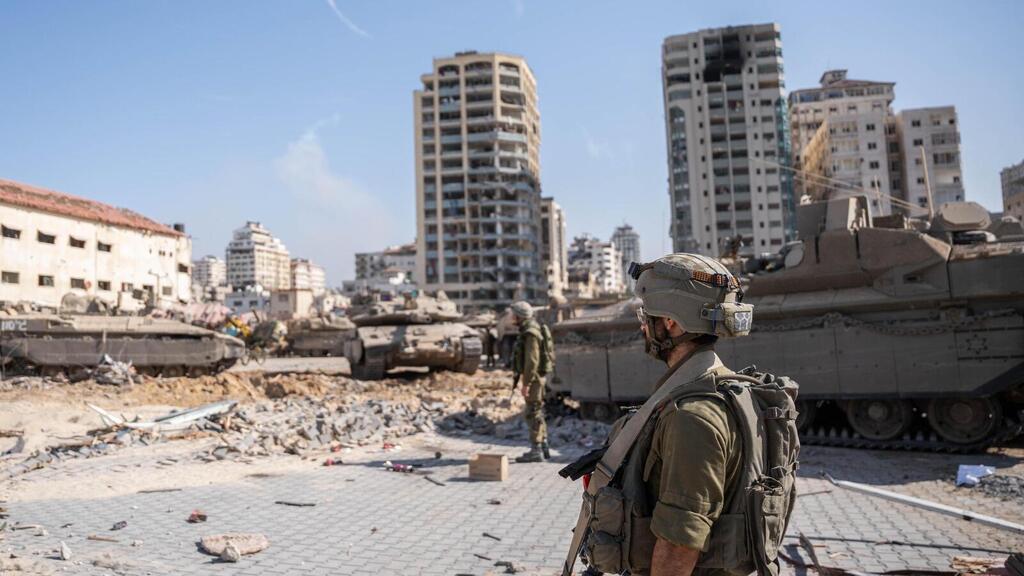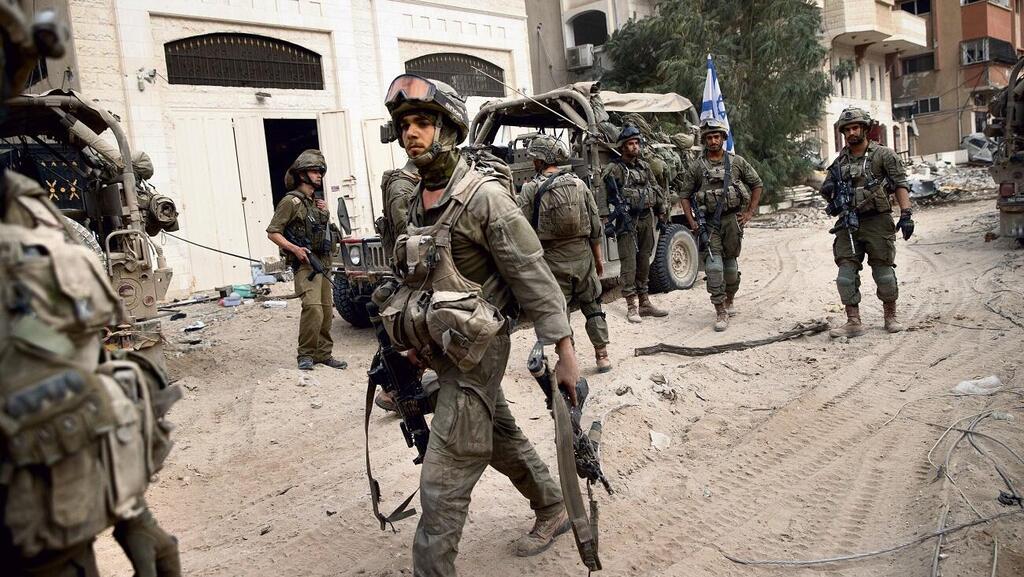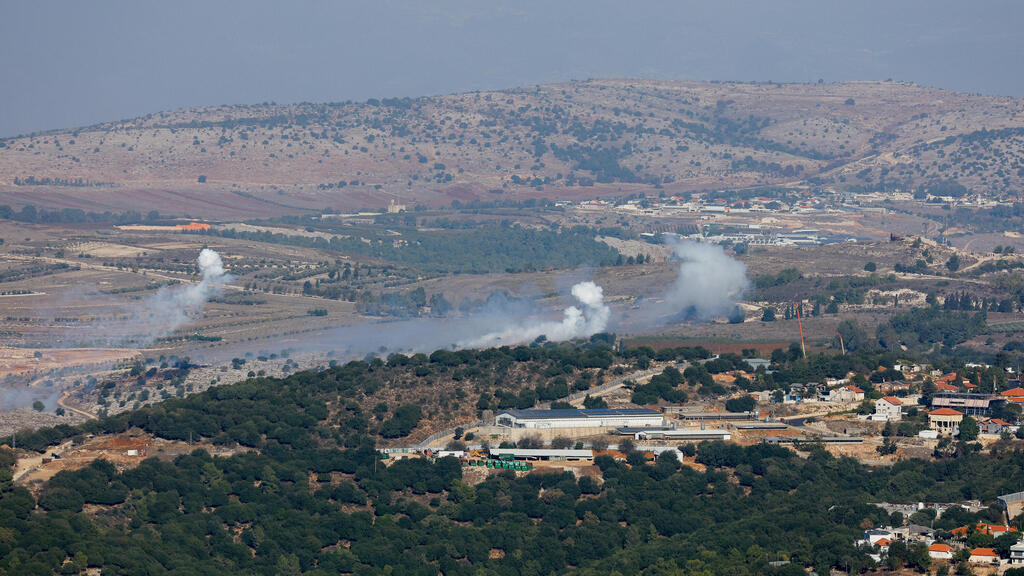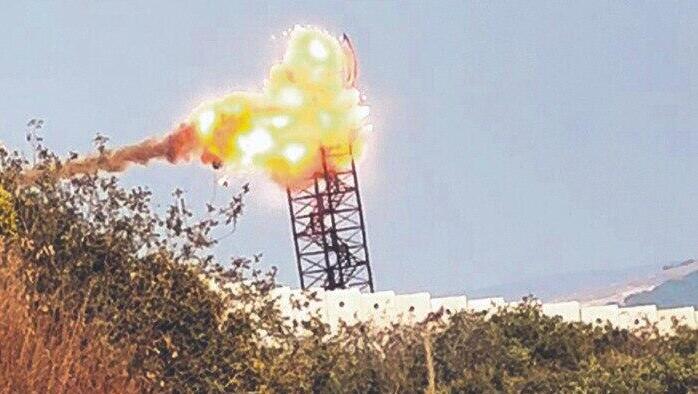Iran's supreme leader delivered a clear message to the head of Hamas when they met in Tehran in early November, according to three senior officials: You gave us no warning of your Oct. 7 attack on Israel and we will not enter the war on your behalf.
Read more:
Ayatollah Ali Khamenei told Ismail Haniyeh that Iran - a longtime backer of Hamas - would continue to lend the group its political and moral support, but wouldn't intervene directly, said the Iranian and Hamas officials with knowledge of the discussions who asked to remain anonymous to speak freely.
5 View gallery
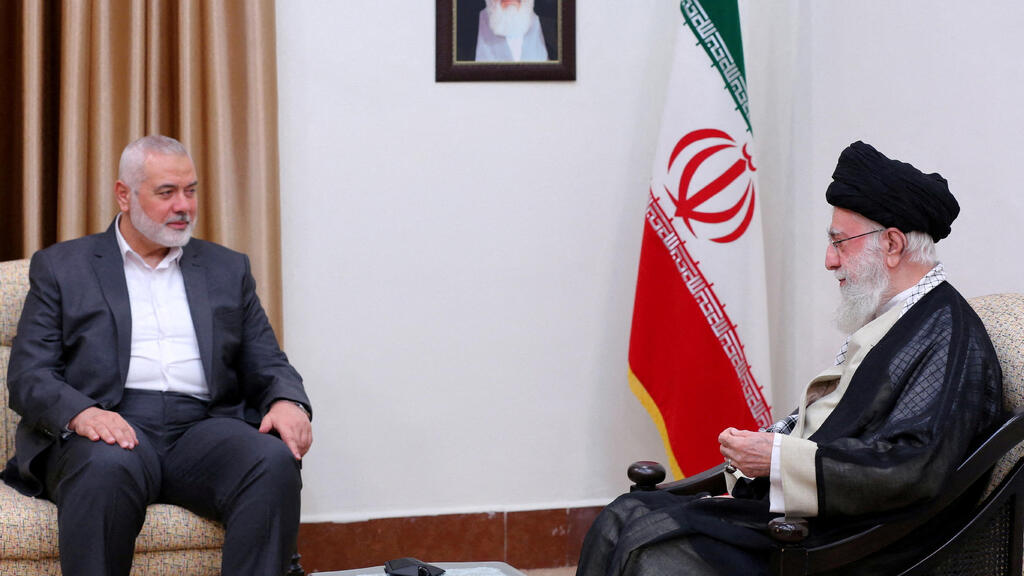

Iran's Supreme Leader Ayatollah Ali Khamenei (right) meets with Hamas' leader Ismail Haniyeh
(Photo: Reuters)
The supreme leader pressed Haniyeh to silence those voices in the Palestinian terror group publicly calling for Iran and its powerful Lebanese ally Hezbollah to join the battle against Israel in full force, a Hamas official told Reuters.
Hezbollah, too, was taken by surprise by Hamas' devastating assault last month that killed 1,200 Israelis; its fighters were not even on alert in villages near the border that were frontlines in its 2006 war with Israel and had to be rapidly called up, three sources close to the Lebanese group said. "We woke up to a war," said a Hezbollah commander.
The unfolding crisis marks the first time that the so-called Axis of Resistance - a terrorist alliance built by Iran over four decades to oppose Israeli and American power in the Middle East - has mobilized on multiple fronts at the same time.
Hezbollah has engaged in the heaviest clashes with Israel for almost 20 years. Iran-backed terror groups have targeted U.S. forces in Iraq and Syria. Yemen's Houthis have launched missiles and drones at Israel.
The war is also testing the limits of the regional coalition whose members - which include the Syrian government, Hezbollah, Hamas, and other terror groups from Iraq to Yemen - have differing priorities and domestic challenges.
Mohanad Hage Ali, an expert on Hezbollah at the Carnegie Middle East Center think-tank in Beirut, said Hamas' Oct. 7 terror attack on Israel had left its axis partners facing tough choices in confronting an adversary with far superior firepower.
"When you wake up the bear with such an attack, it's quite difficult for your allies to stand in the same position as you."
Hamas plea for axis help
Hamas, the ruling terror group of Gaza, is fighting for its survival against Israel, which vows to wipe it out.
On Oct. 7, Hamas' commander Mohammed Deif called on its axis allies to join the struggle. "Our brothers in the Islamic resistance in Lebanon, Iran, Yemen, Iraq, and Syria, this is the day when your resistance unites with your people in Palestine," he said in an audio message.
Hints of frustration surfaced in subsequent public statements by Hamas leaders including Khaled Meshaal, who in an Oct. 16 TV interview thanked Hezbollah for its actions thus far but said "The battle requires more".
Nonetheless, alliance leader Iran won't directly intervene in the war unless it is itself attacked by Israel or the United States, according to six officials with direct knowledge of Tehran's thinking who declined to be named due to the sensitive nature of the matter.
Instead, Iran's clerical rulers plan to continue using their axis network of armed allies, including Hezbollah, to launch rocket and drone attacks on Israeli and American targets across the Middle East, the officials said.
The strategy is a calibrated effort to demonstrate solidarity for Hamas in Gaza and stretch Israeli forces without becoming engaged in a confrontation with Israel that could draw in the United States, they added.
"This is their way of trying to create deterrence," said Dennis Ross, a former senior U.S. diplomat specializing in the Middle East who now works at the Washington Institute for Near East Policy think-tank. "A way of saying: 'Look as long as you don't attack us, this is the way it will remain. But if you attack us, everything changes'."
Iran has repeatedly said that all members of the alliance make their own decisions independently.
The Iranian foreign ministry didn't respond to a request for comment about its response to the crisis and the role of the Axis of Resistance, a term of disputed origin that has been used by Iranian officials to describe the coalition.
Hamas didn't immediately respond to questions sent to Haniyeh's media adviser, while Hezbollah also didn't immediately respond to a request for comment.
Hezbollah's home problems
Hezbollah, the most powerful group in the axis, boasting 100,000 fighters, has exchanged fire with Israeli forces across the Lebanon-Israel border on an almost daily basis since Hamas went to war with Israel and more than 70 of its fighters have been killed.
Yet, like its backer Iran, Hezbollah has avoided an all-out confrontation.
The group has calibrated its attacks in a way that has kept the violence largely contained to a narrow strip of territory at the border, even as it has escalated those strikes in recent days, according to the people familiar with its thinking.
One of the sources said Hamas wanted Hezbollah to strike deeper into Israel with its massive arsenal of rockets but that Hezbollah believed this would lead Israel to lay waste to Lebanon without halting its attack on Gaza.
Hezbollah, which is also a political movement deeply involved in Lebanese government affairs, knows Lebanon can ill afford another war with Israel, more than four years into a financial crisis that has driven up poverty and hollowed out the country's governing institutions.
Lebanon took years to rebuild from the 2006 war, during which Israeli bombardment pounded the Hezbollah-controlled south of the country and destroyed swathes of its stronghold in the southern suburbs of the capital Beirut.
Hezbollah leader Sayyed Hassan Nasrallah said in a Nov. 3 speech that Hamas had kept its attack on Israel a secret from its allies and this had ensured its success and not "upset anyone" in the axis. Hezbollah attacks at the Israeli border were unprecedented and amounted to "a real battle", he said.
America comes under fire
The United States, too, is keen to avoid the war spiraling beyond Gaza. Having fought two costly and ill-fated wars in Iraq and Afghanistan over the past two decades, it now finds itself bankrolling Ukraine's defense against Russia's invasion.
President Joe Biden has so far sought to limit the U.S. role in the Gaza crisis mostly to ensuring military aid to Israel. He has also moved two aircraft carriers and fighter jets to the eastern Mediterranean, partly as a warning to Tehran.
The temperature is rising; at least 40 drone and rocket attacks have been launched at U.S. forces by axis terrorists in Iraq and Syria since the Gaza war began in response to American support for Israel, according to the Pentagon. U.S. officials say America has conducted three sets of retaliatory strikes against facilities in Syria used by terrorists linked to Iran.
On Monday, U.S. Defense Secretary Lloyd Austin stressed the risk of another major front being opened in the war.
"What we've seen throughout this conflict, throughout this crisis, is tit-for-tat exchanges between Lebanese Hezbollah and Israeli forces," he told a news conference in Seoul. "No one wants to see another conflict break out in the north."
Israel looks to the north
Austin emphasized the need to avoid any regional escalation when he spoke to his Israeli counterpart Yoav Gallant over the weekend, according to a readout of the call.
The Israeli prime minister's office didn't immediately respond to a request for comment for this article.
Two Israeli security sources, who declined to be identified, said that Israel didn't seek any spread of hostilities but added that the country was prepared to fight on new fronts if needed to protect itself. They said security officials deemed the most potent immediate threat to Israel came from Hezbollah.
The enmity runs deep between Israel and Iran. Iran does not recognize Israel's existence, while Israel has long threatened military action against Iran if diplomacy fails to curb its disputed nuclear activity.
In the current crisis, realpolitik may prevail for Tehran, according to Karim Sadjadpour, an Iran specialist at the Carnegie Endowment for International Peace think-tank.
"Iran has shown a four-decade commitment to fighting America and Israel without entering into direct conflict. The regime's revolutionary ideology is based on opposition to America and Israel, but its leaders are not suicidal, they want to stay in power."



